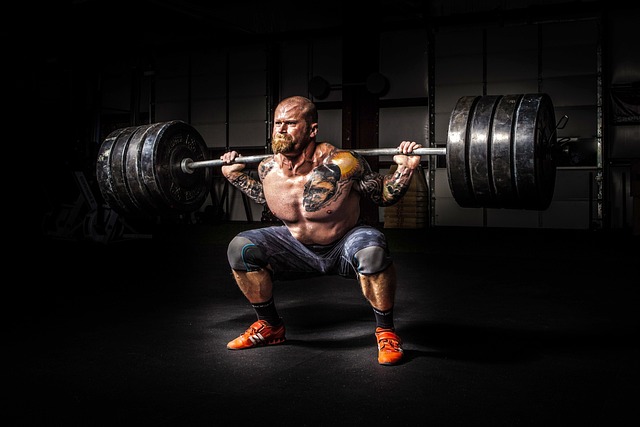Non-Surgical Body Sculpting offers safe, effective fat reduction and body contouring without incisions or recovery time. Using advanced technologies like radiofrequency, laser, and vacuum therapies, this method targets specific areas, breaking down fat cells through gentle skin massage. Ideal for stubborn areas like belly fat, love handles, or thigh fat, it provides noticeable results over several sessions. Customized programs use 3D imaging and bioelectrical impedance analysis to tailor treatments, ensuring optimal and personalized outcomes.
Customized fat reduction programs are transforming body sculpting. Unlike surgical methods, non-surgical techniques offer a safer, more flexible approach to contouring your figure. This article explores the fundamentals of non-surgical body sculpting, highlighting its advantages over generalized treatments. We’ll delve into how customization improves results and patient satisfaction, while also providing insights on evaluating body composition, various fat reduction techniques, personalized treatment planning, procedure expectations, safety considerations, long-term outcomes, and finding the right specialist. Discover why non-surgical body sculpting is a game-changer for those seeking effective, safe body contouring.
Understanding Non-Surgical Body Sculpting: The Basics

Non-Surgical Body Sculpting is a popular and minimally invasive approach to body contouring. Unlike traditional surgical procedures, it offers a safe and effective way to reduce fat and improve body shape without incisions or extensive recovery periods. This modern technique utilizes advanced technologies like radiofrequency, laser, and vacuum therapies to target and break down fat cells in specific areas.
The process typically involves a series of sessions where specialized equipment is used to gently massage the skin, stimulating lymphatic drainage and metabolic activity within fat cells. Over time, this leads to reduced fat deposits and improved body definition. Non-Surgical Body Sculpting is particularly appealing for individuals seeking a more gradual and natural-looking transformation, often targeting problem areas like stubborn belly fat, love handles, or thigh fat.
– Definition and overview of non-surgical body sculpting techniques.

– Key difference between surgical and non-surgical methods.

When considering fat reduction options, understanding the key difference between surgical and non-surgical methods is paramount. Non-Surgical Body Sculpting, also known as Non-Invasive Body Contouring, offers a safer and more amenable approach compared to traditional surgery. It involves no incisions or extensive recovery periods, which makes it an attractive option for individuals seeking body shaping without the risks associated with surgery. These non-surgical procedures utilize advanced technologies such as radiofrequency, ultrasound, and laser to target and break down fat cells, stimulating their elimination from the body through natural processes.
In contrast, surgical methods like liposuction involve making incisions and physically removing fat cells. While effective, they carry inherent risks including infection, bleeding, scarring, and longer recovery times. Non-Surgical Body Sculpting, on the other hand, is typically performed as an outpatient procedure with little to no downtime, allowing individuals to resume their normal activities more quickly. This method is especially beneficial for those who may not be suitable candidates for surgery due to health conditions or simply prefer a less invasive approach to achieving their desired body shape.
The Benefits of Customized Fat Reduction Programs

Customized Fat Reduction Programs offer a multitude of benefits over more generic or one-size-fits-all approaches. By tailoring treatments to individual needs and goals, these programs ensure maximum effectiveness and minimal risks. Each person’s body is unique, and non-surgical body sculpting techniques like customized fat reduction recognize this diversity. This personalized approach allows for precise targeting of problem areas, leading to noticeable improvements in body contouring.
Furthermore, such programs often incorporate advanced technologies and expertise from qualified professionals. This ensures safe and efficient procedures that deliver visible results without the downtime or complications associated with surgical alternatives. By combining these factors, customized fat reduction programs provide a superior experience tailored to help individuals achieve their desired physique.
– Advantages of personalized programs over generalized treatments.

– How customization improves results and patient satisfaction.

Evaluating Body Composition: Measuring Success

– Importance of assessing body fat distribution and percentage before treatment.

– Advanced technologies used for precise measurements.

Modern non-surgical body sculpting programs leverage advanced technologies for precise measurements. These innovations allow for highly customized treatments tailored to individual needs and goals. By utilizing cutting-edge equipment, professionals can accurately assess body composition, identify problem areas, and develop targeted strategies that go beyond general approaches.
Technologies like 3D imaging, bioelectrical impedance analysis, and high-resolution sensors provide detailed data on fat distribution, muscle mass, and skin thickness. This wealth of information enables practitioners to craft personalized plans that combine various techniques—such as targeted laser therapy, ultrasound, or radiofrequency—to achieve optimal results without invasive procedures.
